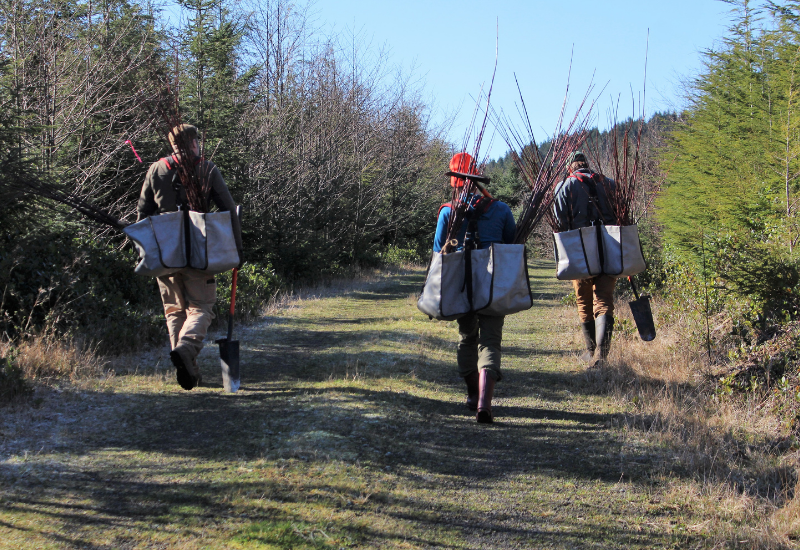
Since its acquisition in 2016, North Coast Land Conservancy’s Boneyard Ridge has been the site of extensive active stewardship to improve forest health by increasing diversity in a variety of ways.
This long-term stewardship project started with a meticulous tree-thinning process in the winter of 2019. In the process, NCLC removed approximately two-thirds of the trees in particularly dense portions of the forest—the result of it being commercially logged for decades prior—and created gaps that mimic the natural structure of a healthy rainforest.
The next step was introducing and adding trees species that are lacking on the 340-acre property, located south of Seaside and adjacent to Ecola State Park and NCLC’s Circle Creek Conservation Center.
“We’re trying to improve species diversity, structural diversity, and age-class diversity,” says Land Steward Eric Owen.
Currently, the property is dominated by Sitka spruce, western hemlock and red alder. Last year, NCLC’s stewardship team planted 1,400 western redcedar in the forest on Boneyard Ridge.
This February, the tree-planting has resumed, with a focus on bigleaf maple. The trees are mostly going into the gaps left behind during the thinning process. Those gaps are also being used to host habitat piles that are frequented by songbirds, small mammals, bugs, amphibians and other wildlife.
While bigleaf maples are now scarce on the property, there’s evidence of the species featuring more prominently within the historic forest composition. Bigleaf maple are often found elsewhere within the Necanicum corridor.

Land steward Eric Owen, development director Kassia Nye and volunteer Colin Meston plant trees on Boneyard Ridge in late February.
According to volunteer Colin Meston, who works for the U.S. Forest Service and serves as a site steward for an NCLC habitat reserve near Astoria, the goal of the project on Boneyard Ridge is essentially “turning a farm into a forest.”
When forests lack structural, species and age-class diversity, the quality of habitat for wildlife is diminished. In short, more diversity means more and better habitat for a wider range of species. Additionally, homogenized forests are more vulnerable to disturbances, from pests and infestations to storm events. Diversifying the forest increases its long-term resiliency.
“That’s the goal: To do some management and then let the forest do its thing and get on its natural trajectory,” Eric says.
The project on Boneyard Ridge is being funded by grants from the Oregon Watershed Enhancement Board (OWEB), U.S Fish and Wildlife Service, and Oregon Wildlife Foundation. Although it is a unique undertaking for NCLC—whose habitat enhancement efforts have typically centered on riparian plantings, wetland restoration and coastal prairie restoration—it has provided insight and information that can be applied to the Rainforest Reserve, which features similar stands of trees and conservation challenges.

Eric Owen plants trees near a habitat pile created during the tree-thinning process in Winter 2019.
Comments